Buy HD e-Books & Text —— www.ccelian.com
the Art of Nao
Scrolls: 1 . 2a . 2b . 3 . 4 . 5 . 6 . 7 . 8 . 9 . 10 . 11 . 12 . 13 . 14 . 15 . 16 . 17 .
18 . 19 . 20 . 21 . 22 . 23 . 24 . 25 . 26 . 27 . 28 . 29 . 30 . 31 . 32 . 33 . 34 .
< Scroll 11 ____________________________________________________ Scroll 13 >
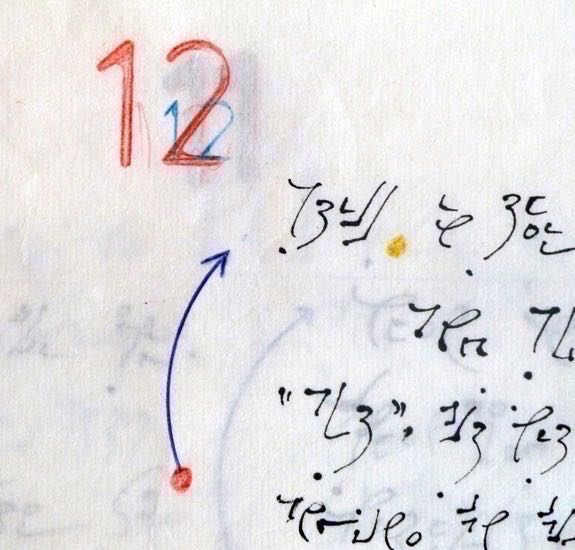
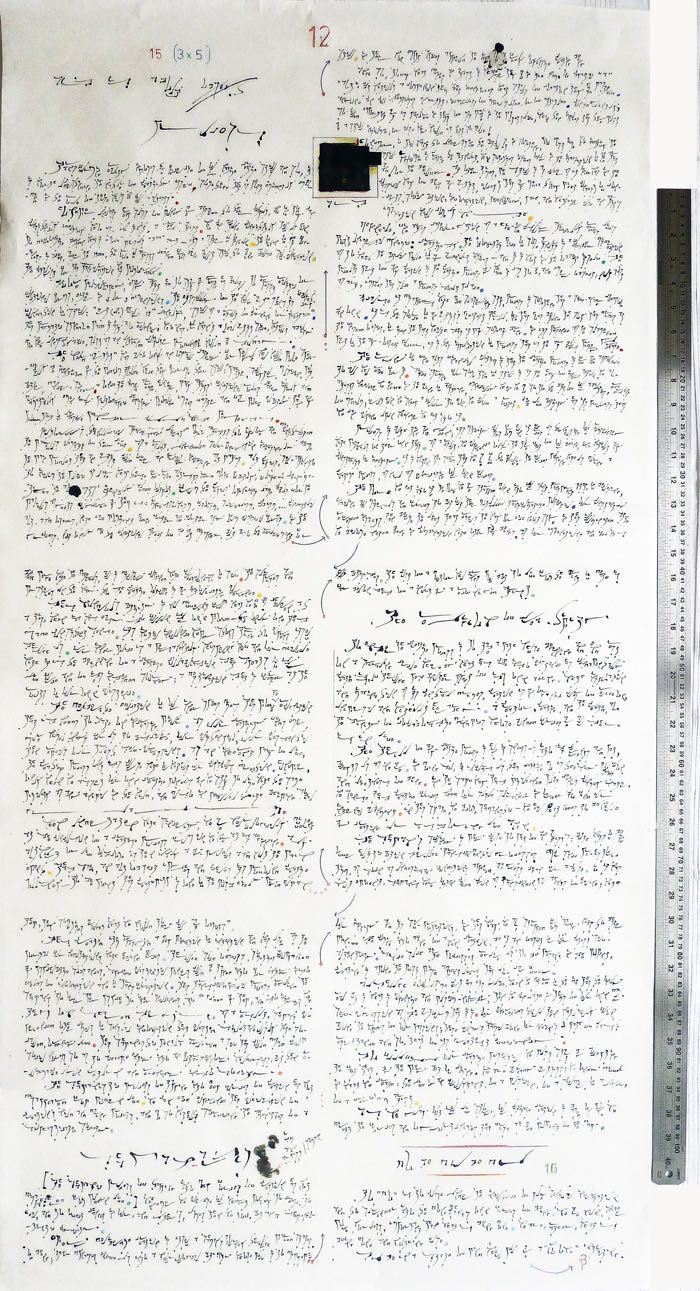
Scroll 12 . 68 x 137 cm / 26.7 x 53 inches
_______________________
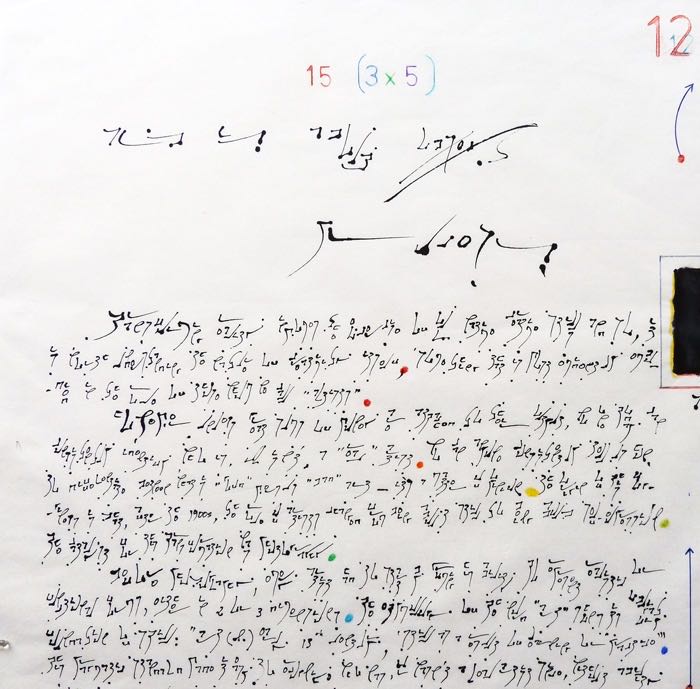
Scroll 12-section 1.1
15 Art is About Object Process
Transforming reality involves the exercise of our native creative skills and so, it is worth understanding the nature of creativity itself, something that is most evidently embodied in the role of those whom we call “artists”.
However, unless great sums of money are attached to them, no one today can consistently identify who is, or isn’t a ”real” artist. Nor can anyone consistently tell us how to differentiate between “good” versus “bad” art—it’s a matter of opinion. The origin of this fogginess is that, after the 1900s, the role of artists changed from being about skill to being about self-expression. The catalyst for this transformation was photography.
Before photography, every artist had to start by proving his ability to represent realistic or functional forms, either in 2 or 3 dimensions. The etymology of the word “art” shows its obligatory foundation of skill: “art (n.) early 13th century, ‘skill as a result of learning or practice.’"
________________
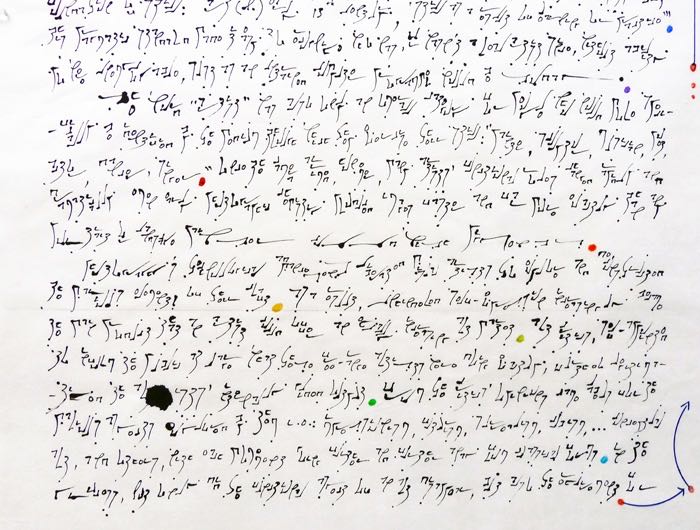
Scroll 12-section 1.2
This pragmatic standard made it easy to know who was, and who wasn’t a real artist since, without ability, you were unemployable, just as an untrained computer programmer would be today.
The word “artist” was also only an overall category for people who would more specifically be identified by the medium through which they exercised their skill: “painter,” sculptor,” “musician,” “poet,” “actor,” or “dancer.” Once the camera arrived, however, the artist’s functional role changed rapidly and dramatically. Even early photographic chemistry produced images faster and far more exactly than any portrait or landscape painter could with pigments.
This technological advancement liberated visual artists to explore and deconstruct the various elements of their craft. As a result, unhindered self-expression increasingly became the main product offered by an equally increasing art market. Art critics, self-appointed to tell the public what these free range artists were doing exactly, further legitimatized the artists’ internally guided output. From the critics’ opinions came labels for the various aspects explored by them, i.e: Impressionism, Futurism, Surrealism, Cubism, Abstract Expressionism, Conceptual Art, and others, with each movement going further and further away from classical forms. In the process, not only did the functional aspect of an art disappear, but also the requirement for >
__________________

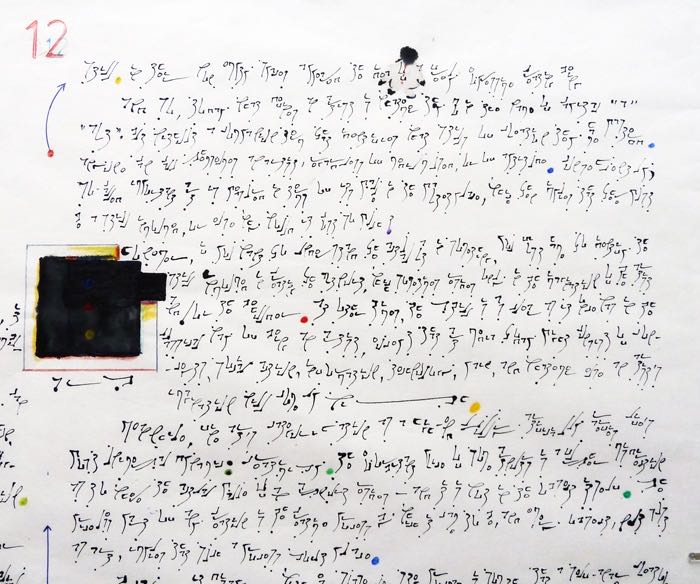
Scroll 12-section 2.1
> skill. In their place appeared the concept of creative expression.
And so, today, what defines an artist is whatever they do in the name of capital “a” “Art” without a companion term that identifies what skills of creation they have mastered. These days, anyone can call themselves an artist, regardless of medium used or of aptitude. Consequently, so-called important art is measured in terms of its value in the marketplace, which them implies that there must be a skilled involved, or else why would it cost so much?
However, if you want to understand the actual art in something you first have to identify the skill involved in creating the artwork, which sometimes resides only in the imagination of the artist &/or the beholder. At other times, the skill is as clear as it once was in the classical sense of being an artist, except that art media today might consist of concepts, social action, information, technology, performance, pain, and whatever else an artist’s imagination will come up with.
Meanwhile, fine art’s categorization as a high-end luxury artificially rarefies life’s universal dynamic: creativity. The exorbitant price of some artworks is a further misdirection as to where the actual value of an artwork resides—and it is not in the object itself. The priceless part of any creation is the creative process by which it came to be, and every object, not just as art, implies that such a process took place.
______________
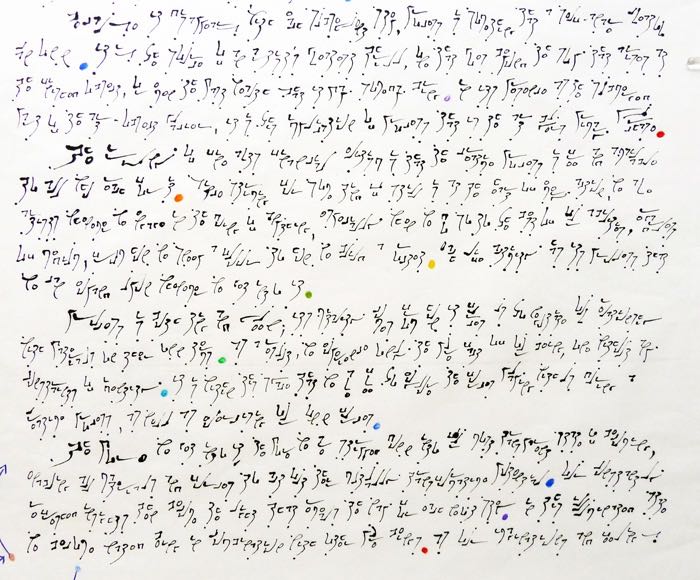
Scroll 12-section 2.2
Because it disappears with each subsequent step, process is something that only a self-aware creator can own. It is the source of an artist’s greatest thrill, one that goes beyond the joy that arises at the finished object, or even the vast wealth that it may someday bring. In its presence as the submerged part of the art-object glacier, it is this implication of process that is the art buyer’s primary purchase.
The irony of fine art’s financial elitism is that the creative process is free and available to all who reach for it. Since striving for some kind of a skill is at the heart of every action, we are artists whenever we engage in the doing of anything, especially when we do so to the best of our ability, regardless of medium, from how we sweep a floor to how we build a rocket. Each life activity has its process that we can expand upon by getting into it.
Process is both king and queen; its vitality comes from how it forces us to negotiate our relationship with materials on their own terms, As a result, we experience only the pure fact of our being, that is, without any constraints of identity. It is within this space that we are free to explore the forces playing with us during a creative process, as well as exercising our own forces.
The more we get into it, the more we are stripped down to our most transparent state of becoming, enabling all materials and forces to act out their mutually transformative potential. Our constantly refreshed insights then become the light that reveals the way for each next step. In this illuminated state we become naked being in combination with other pure beings. As our imaginations and feelings >
_____________________
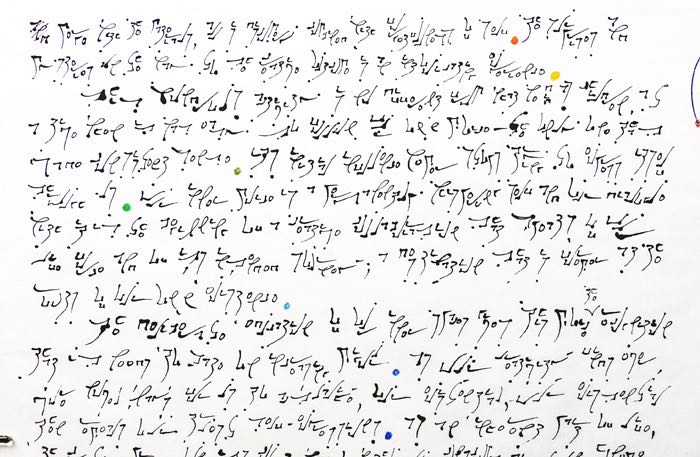
Scroll 12-section 3.1
> merge with the materials, all is discovery combined with forgetfulness of self. The surprises and mysteries on the way to the creative outcome is an intoxicating experience.
This wondrous activity is no different from what we did as children, at a time when it was easy to follow our own voice—the only one that made consistent sense. Its initial influence never stops trying to express itself through us. Our inner voice is a permanently whispering self and our dialogue with it is the beginning of a creative collaboration that speaks of our life force and of its intended journey: a destination that is forever at the roots of our own existence.
The deliberate education of our inner spaces gives this voice the recognition that it needs to take on increasing vigour. As our creativity finds ever more novel ways for us to actualize, our existential voice then reveals our truest self expressions.
_________________
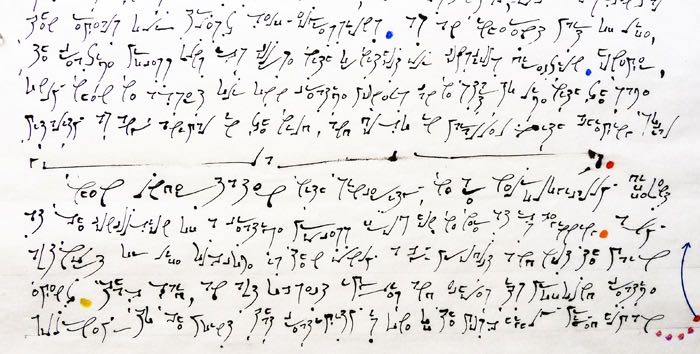
Scroll 12-section 3.2
As an inherent part of life, the creative process runs its course with or without our conscious direction. However, only when we assert our own creative powers can we start to live with the same vitality as any animal in the wild, and do so in parallel with achieving socially driven goals.
When undertaken with sincerity, we are neurologically different at the conclusion of a creative process from how we were at its beginning. Any artwork or life outcome is then only a by-product and not the main event. That said, an art object implies and echoes its profound creative journey—to the point that creativity is one of the most highly prized human >
__________________
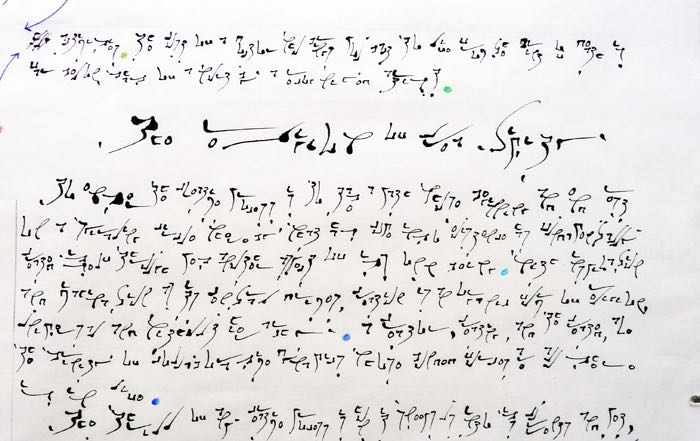
Scroll 12-section 4.1
> activities. The cost of a doctor who brings you back to life from the brink of death is far below that of a work by a renowned artist.
The Religion of Creativity
To enter the creative process is to take a path whose beginning and end rest on a spiraling circle whereby what has come into existence has fundamentally created itself through yet another aspect of its own being. With inspiration and imagination as its central drives, creation is an organic form of religion: universal and without hierarchy. A creator, creating, and the created, are the trinity of collaborative dynamics whose bonded forces are all there is in life.
_________________
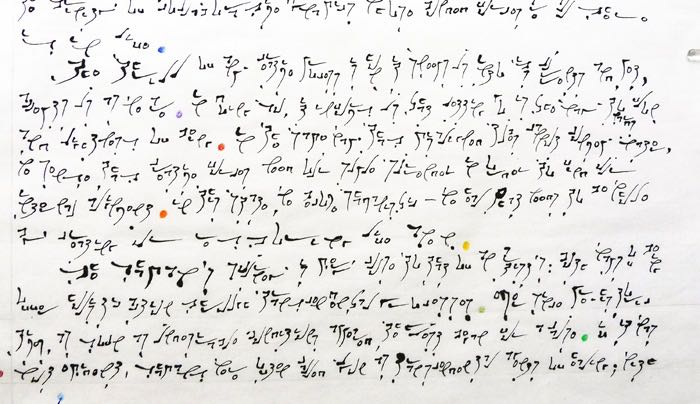
Scroll 12-section 4.2
The thrill of any creative process is how it sweeps us into its currents and yet, accepts us as we are. In doing so, it informs us that letting go is the way towards flow and lightness of being. In the same way that misaligned tubes cannot convey water, we sense that creative forces need our supple surrender in order to come into internal alignment. In this state, we become shamanistic—we heal what needs to be whole by creating or restoring life anew.
The shaman’s journey is very close to that of an artist’s; both ways of being offer holistic action through transcendental processes. Ever since prehistoric times, as soon as undesirable conditions appeared, the quest began to find a cause. If it was not obvious, shamans were often called upon as transcendental agents of healing; with >
__________________
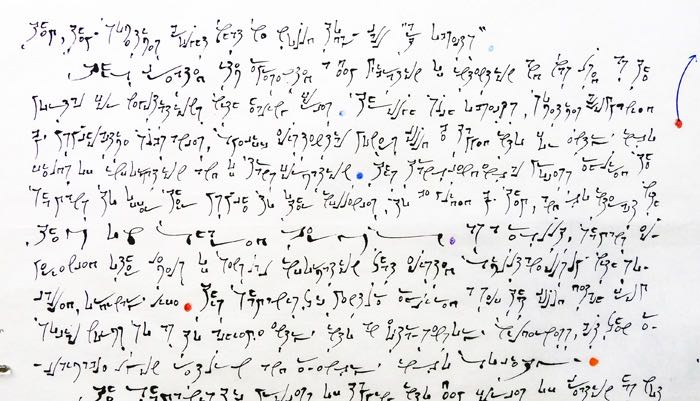
Scroll 12-section 5.1
> them, they sometimes brought what we would today call “art objects.”
The created item represented a deep vibration of intention and was used as the portal for negotiations with healing forces. Through such objects, sometimes accompanied by psychoactive substances, specific existential powers could be tapped into for shamanistic entry into fields of information and of transformation. This transcendental process required the shamans to offer their psyche to other influences, to be guided by them, and to interact with them on shared terms. As a result, shamans experienced other levels of sensual information that existed simultaneously with so-called, ordinary life. This shamanistic venture required a self that could detach from social norms so as to achieve entry into an extrasensory wilderness, then reclaimable upon return and reentry into society.
_________________
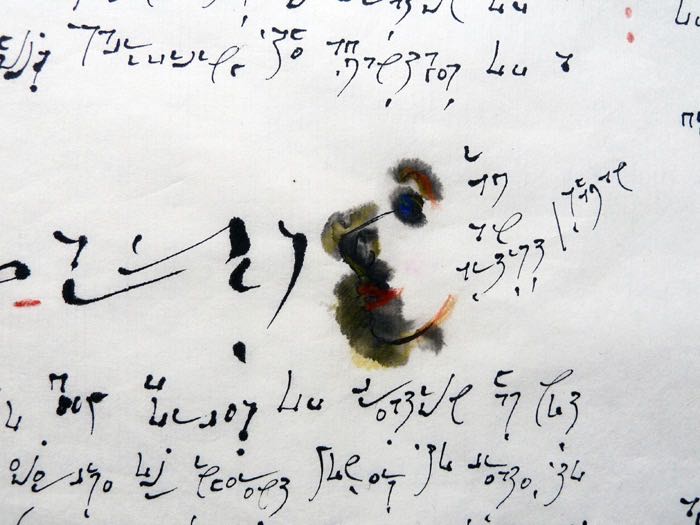
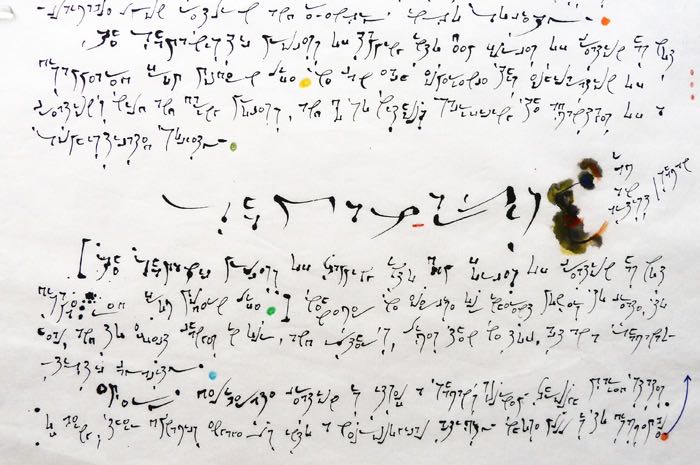
Scroll 12-section 5.2
The shamanic process of tapping into deep forces of creation has not disappeared from modern life. We can each experience this exhilaration of creation’s wild process without sacrificing the advantages of a sophisticated society. Whenever we exercise our inherent powers to create, to heal, and to effect changes in our, and others’, lives, we too act in a shaman-artistic capacity.
Every deliberate creation is itself a shaman’s journey through varied states of being; their dynamics engage us into a neurological activity whose pull is to disassemble >
________________
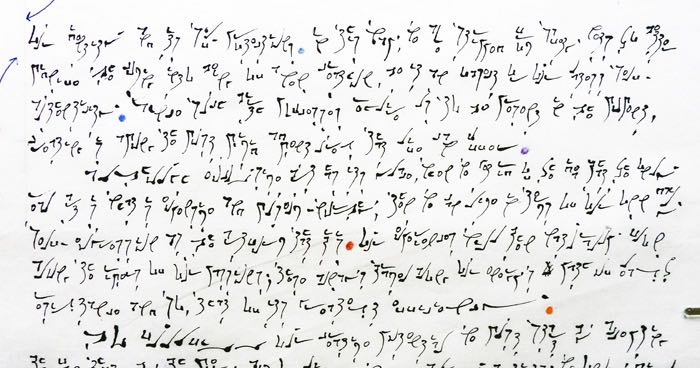
Scroll 12-section 6.1
> our identity and its self-protections. In this way, we are stripped from safety nets to better midwife the coming into being of a new creation, be it an object or our latest self-authenticity. Since such birth processes require us to be present in the moment, creating is among the most vivid adventures that life can offer.
Although exclusive art has its place, when we get rid of the idea that the only “real” art is what is expensive and museum-worthy, then we can live in terms of our own daily self-expression as the artform that it is. Our experiences will then naturally flow along the rivers of our passions; these always travel along our energy’s path of least resistance and so, that of its greatest efficiency.
_________________
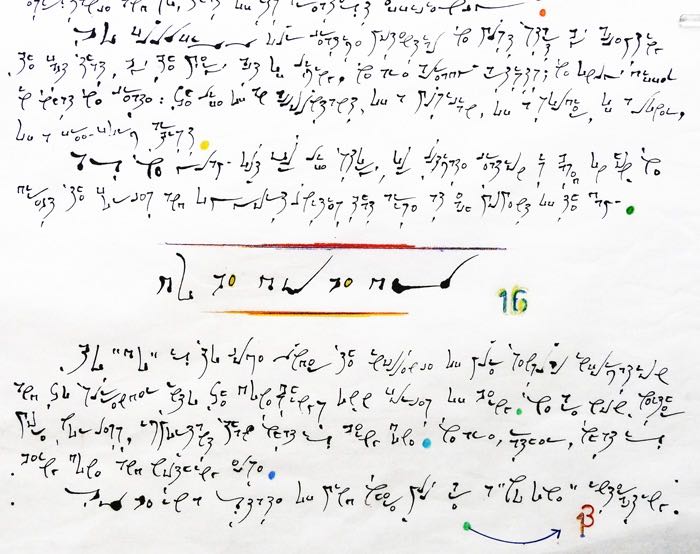
Scroll 12-section 6.2 — End of Scroll 12
To fulfill our creative potential we must start by accepting the fact that, by the very act of living, we are already artists; we only differ in what we create: the life of an accountant, of a musician, of a soldier, of a loner, of a free-form artist.
As we play out our life story, our ultimate creation is how we direct the forces and opportunities that arise at each moment of the day.
Do Be Do Be Do 16
To “do” is to come under the influence of pure sensual information and to surrender into the done thing’s own forces of being. We are now neither more nor less important than what is being done. We are, in fact, what is being done and nothing else.
To be in a state of mind where you are a "no one" interacting >
< Scroll 11 ____________________________________________________ Scroll 13 >
Scrolls: 1 . 2a . 2b . 3 . 4 . 5 . 6 . 7 . 8 . 9 . 10 . 11 . 12 . 13 . 14 . 15 . 16 . 17 .
18 . 19 . 20 . 21 . 22 . 23 . 24 . 25 . 26 . 27 . 28 . 29 . 30 . 31 . 32 . 33 . 34 .
Buy HD e-Books & Text —— www.ccelian.com
© C.C. Elian 2010 - 2016